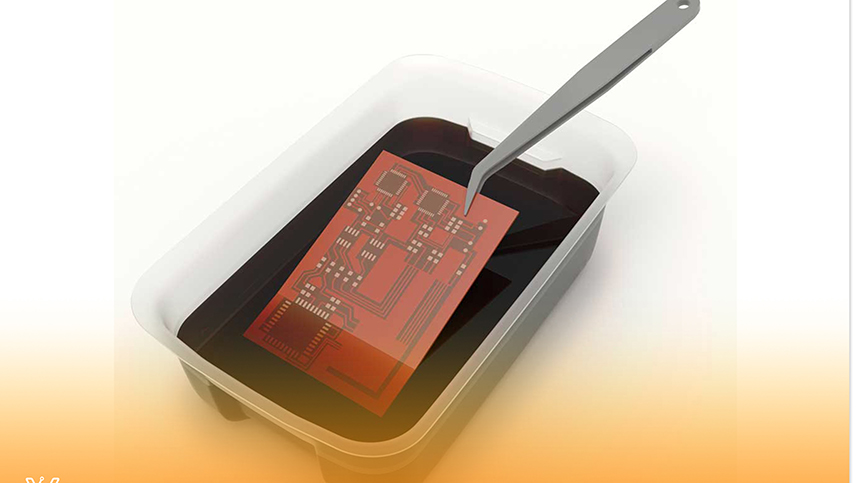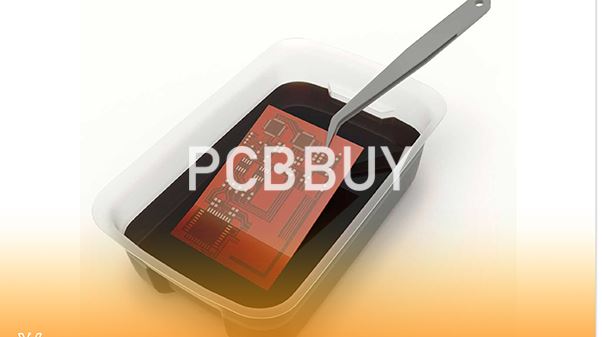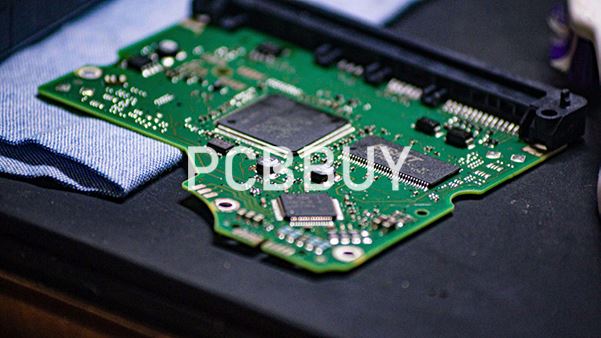The Development of Optoelectronic PCBs
By:PCBBUY 03/08/2024 15:43

Optoelectronic PCBs, integrating light and electricity, represent a new generation of high-performance packaging substrates that utilize light for signal transmission and electricity for processing. They involve adding a light-guiding layer to the well-established traditional printed circuit boards (PCBs), thereby expanding the use of circuit boards from conventional electrical connectivity to the field of optical transmission.
Three Eras of Optoelectronic PCB Development
1. First Generation: Dispersed Fiber Optic Chips on PCBs - Chip-to-Chip Interconnects and Board-to-Board Interconnects
Developed in the early 1990s, this generation primarily utilized discrete optical fibers and fiber optic connectors for interconnection between modules and components. It was widely adopted in large-scale mainframes due to its simple structure, offering cost-effective point-to-point optical connections. By employing discrete optical fibers for intra-board optical interconnects, this form of optical interconnectivity was a derivative of the previously used fiber optic communication technology, enabling directional transmission of optical communication signals from one point to another.

2. Second Generation: Flexible Substrate Optical Interconnect Technology
Developed in the mid-1990s, this technology utilized flexible substrates for distributing optical fibers. Similarly, it could be applied for point-to-point optical connections using connectors as mentioned earlier. Flexible optical waveguide thin plates constituted the optical signal network, representing the most prominent feature of the second stage of optical waveguide circuit product forms and technologies. Optical fibers replaced metal wires, utilizing flexible materials as fixed carriers for transmitting optical signals. This approach significantly improved the precision control of impedance characteristics in wiring, compared to the original electrical wiring form.
3. Third Generation: Hybrid Optoelectronic Interconnect Technology
Based on the characteristics of embedded materials and structures, this technology can be roughly divided into four types: surface-type polymer waveguides, embedded polymer waveguides, embedded optical fiber technology, and embedded optical waveguide glass. The most significant difference from the previous two is that this technology can provide multi-channel optical waveguides and connect with active and passive components. The third-generation optical waveguide circuit method integrates existing printed circuit boards with optical transmission lines to form optoelectronic printed circuit boards. The advantage of this hybrid approach is the higher optical transmission line density on the board compared to the early introduction of fiber optic wiring forms. It also enables the automated installation of optoelectronic conversion components. In terms of material development for optical transmission paths within PCBs, low-loss and high-heat-resistant polymers are used as optical waveguide circuit materials.

Current Status of Optoelectronic Printed Circuit Boards
PCBs have been categorized into six generations: single-sided boards (first generation), double-sided boards (second generation), multilayer boards (third generation), high-density interconnect boards (fourth generation), optoelectronic printed circuit boards (fifth generation), and multifunctional boards (sixth generation). Optoelectronic printed circuit boards represent an inevitable trend in the history of PCB development.
According to reports, the University of Strathclyde in Scotland has completed a research and development project called HOLMS, which significantly advances the standard electronic device assembly process through innovative optoelectronic technology integration with traditional PCBs. The main achievement of this research is the successful integration of three components: optical fibers, wireless technology, and optical PCBs, forming a powerful optoelectronic interface that resolves the technical bottleneck of existing memory delays. It is noted that memory delay is one of the primary obstacles faced by current computer systems, mainly due to the delay in accessing data in memory, despite the increasing speed of computer processors. According to the research results of the University of Strathclyde, optoelectronic technology is the only solution to bridge the gap between processor speed and memory bandwidth, which has also been confirmed by the Semiconductor Industry Association of the United States. Research units involved in the HOLMS project are incorporating economically feasible high-speed optical circuit boards into information systems. The goal is to develop optoelectronic technology that is compatible with the standard electronic device assembly process. The main key technology involves loading optical interfaces onto commercial parallel fiber optic arrays and low-cost optical waveguides, making it easy to integrate them with traditional PCBs.
The HOLMS project concluded in September 2005 and completed two demonstration projects, showcasing the functional aspects of this technology. Major universities involved in this research include the University of Strathclyde in Scotland and the University of Heigen in Germany, which are integrating relevant technologies and academic research. Several industrial partners, including PCB manufacturers ILFA, Siemens in Germany, and Thales in France, have incorporated research results into product development. Thales is exploring how to apply HOLMS optoelectronic technology to ultra-high-speed embedded defense systems, while Siemens is developing high-bandwidth optical waveguide printed circuit boards and is expected to launch them within two years. DaimlerChrysler (Germany) Research Center is developing optical waveguide-based backplanes to connect several computers on aircraft or to transmit signals between several computers used in telecommunications systems. The photon vertical cavity surface-emitting laser emits, and the waveguide uses polymer materials, which are reportedly easier to integrate with systems than optical fibers. Primarion is developing waveguide optical path systems to transmit signals at a rate of 10Gb/s over short distances, aiming to keep the signal continuously transmitted to the processor. The electrical signal enters the laser-driven chip from the circuit board, then enters an array of 12 vertical cavity surface-emitting lasers on another circuit board. The laser beam enters a similar device on another circuit board through an optical fiber, and the signal is converted back to an electrical signal by the optoelectronic detector and receiving unit. The company hopes to use this technology for computer optical input/output devices within two to three years. At the Taiwan Trade Center unveiling of the Taiwan Printed Circuit Board and Assembly Exhibition in 2003, the Institute of Electronics at the Taiwan Industrial Technology Research Institute exhibited the results of its collaborative development with Hua Tong Computer and Jia Lianyi

Technology of a high-speed electrical signal transmission optoelectronic printed circuit board and its key technology - organic optical waveguide soft film technology. This new structural assembly technology will provide strong technical support for GHz-level high-speed signal transmission environments required for computer broadband networks and services. The dynamic display system provided by the Institute of Electronics uses computers containing 1Gbps network interfaces, with one end converting electrical signals from the network card into optical signals using an electro-optical conversion module, transmitting data via the optical waveguide soft film layer of the optoelectronic printed circuit board, while the other end of the computer converts the received optical signals back into electrical signals through an optoelectronic conversion module for reception by the network card. Through the transmission architecture described above, a demonstration of high-speed data flow transmitted through the optoelectronic printed circuit board is presented. Currently, optoelectronic printed circuit boards developed by the Institute of Electronics in Taiwan have passed 2.5GHz practical transmission applications and signal eye diagram tests. Moreover, they possess many advantages such as high density, multiple channels, high integration, and suitability for mass production. Many PCB manufacturers and substrate material manufacturers in Europe, America, Japan, South Korea, and Taiwan have actively invested in this new technology and market development. The world's development of optoelectronic printed circuit boards has begun to heat up. Over the past two years, there have been continuous research papers on this topic in the PCB industry worldwide.
Conclusion
Due to the physical limitations of electrical interconnection, optical interconnection has emerged as a new stage in the history of PCBs. It involves optical waveguide materials, methods for producing optical waveguides, low-cost optoelectronic components, and optical assembly, among other aspects. Moreover, these technologies must be compatible with traditional PCB design, manufacturing, processing, and precision coordination. With the accelerated industrialization of optoelectronic printed circuit boards, it is believed that the performance of end products will be greatly improved.
Industry Category











